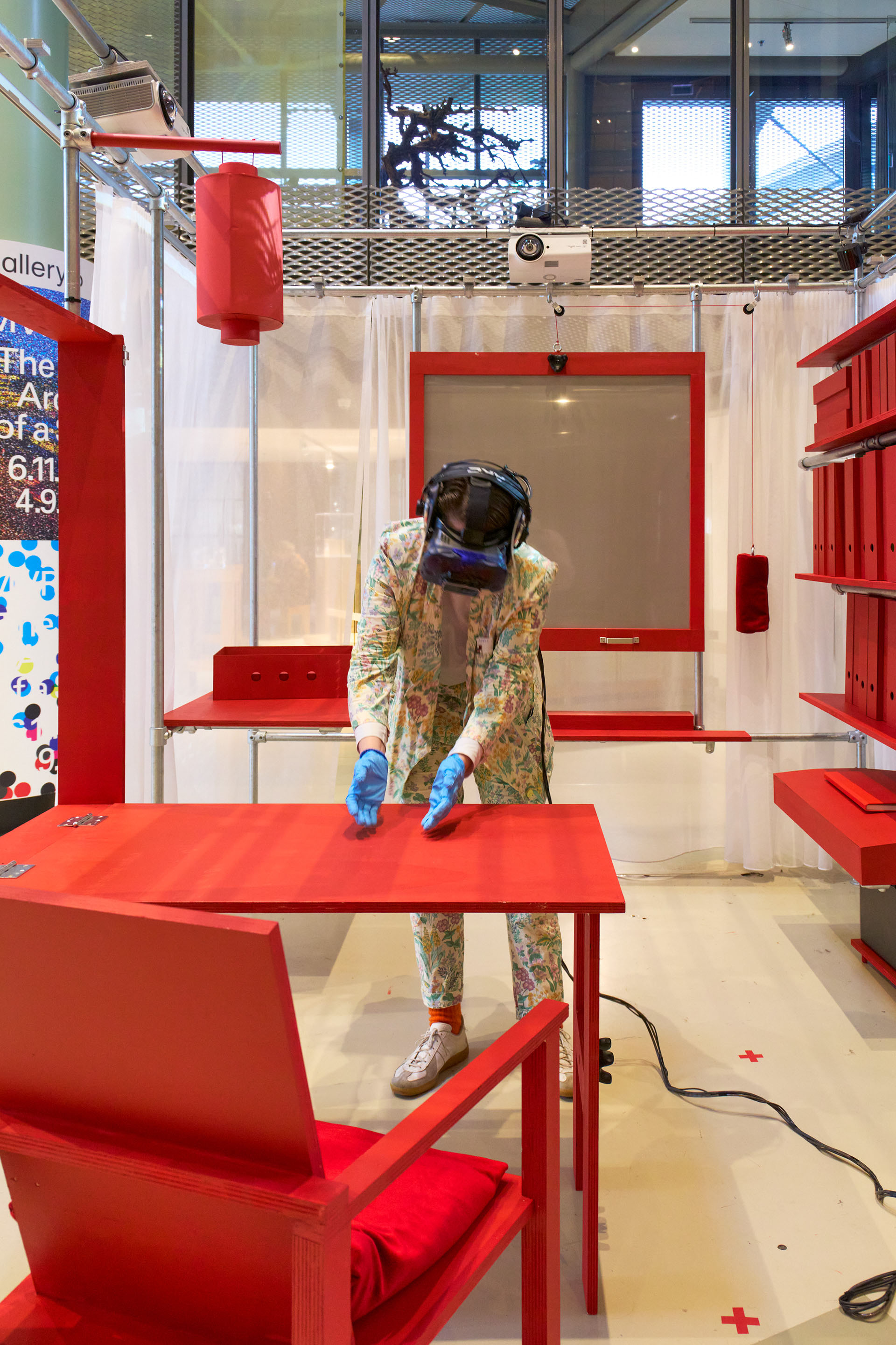Celebrating a decade of Jaap Bakema Study Centre
You might not even notice when visiting the Nieuwe Instituut in Rotterdam, but the north side of this museum is completely enclosed by a curved structure on stilts. This so-called 'banana' contains our national architectural collection: a compilation of archives, some dating back to the 19th century, which together form one of the largest architectural archives in the world. How to make use of this treasure trove is the mission of the Jaap Bakema Study Centre (JBSC), led by associate professor Dirk van den Heuvel. "When you walk into the banana, you get a kind of vertigo... The collection is endless. You can never see it all within a lifetime, let alone study it."
When Dirk had just completed his PhD on archival material ten years ago, he was approached by the director of the Nieuwe Instituut: "How can we make better use of our collection?" Dirk had his answer ready. His proposal became the JBSC, a unique collaboration between the Faculty of Architecture and the Built Environment and the Nieuwe Instituut. Dirk: "Teamwork can be difficult because we have very different logics: in terms of deadlines, funding, planning... ours is the world of technology, theirs more the world of culture and free-thinkers." But despite, or perhaps because of, this difference, the past decade brought exhibitions, research projects, connections, and publications.
Free-thinkers and researchers united in purpose
The main mission of the JBSC is knowledge production and dissemination from the archives of architecture. Dirk: "For me, museum archives work like the Global Seed Vault on Svalbard. The collection is not only meant to preserve, but also to generate. It is knowledge you can reuse." The JBSC is tasked to answer difficult questions surrounding archives. For example, how can you develop curated datasets from archival material? But also, how do we find the parts of the archive that are relevant to current issues?
Museum archives work like the Global Seed Vault: not just preserving knowledge, but also to generating it.
Dirk decided ten years ago that the best way for the JBSC to start its mission was by creating exhibitions. He curated the Dutch pavilion in 2014 at the Venice Biennale, the world's leading international architecture stage. Later came an exhibition on exhibitions - "very meta", says Dirk -, first in Lisbon followed by Rotterdam. Through these events the JBSC built connections with organisations such as the Getty Research Institute in Los Angeles and the Institut fur Geschichte und Theorie der Architektur at ETH Zurich. Next year, 2024, will see a collaboration with the prestigious Akademie der Künste in Berlin on an exhibition on architecture and sustainability.

Art through research, research into art
Throughout these exhibitions, the JBSC never forgot that they are a Study Centre. Dirk: "Every exhibition contains research and leads to new questions. The work is not finished when the doors open! Also, the exhibitions are a means of finding opportunities." The JBSC's growing reputation has enabled it to acquire grants, for example to conduct research on the architecture of the Dutch welfare state or start a PhD project on the history of architecture exhibitions.
Every exhibition contains research… the work is not finished when the doors open!
The common thread of the research projects is engaging the researchers with the collection, while an important secondary mission is learning how to present results. Currently, two PhD students are involved in the Architecture and Democracy project; they are conducting research on housing construction and architectural media, respectively. In addition, NWO is funding two PhD students to conduct research on heritage and marginalised groups in archives. And finally, members of the JBSC just concluded a large multinational project on 'implicit knowledge' in architectural practice and how it is developed and transferred.
Dirk van den Heuvel about the societally conscious researcher
After studying architecture, Dirk worked in various architectural firms for five years, either as a designer or as a researcher. "Then I did PhD, because research turned out to be my passion after all." He certainly does not regret his career choices: "I think master’s students are well advised to work for a few years before starting their PhD. You gain skills that you never learn in academia, and more importantly, you discover why you are doing your research: to improve the world beyond the university. My ideal PhD students are not only good researchers, but also societally engaged."
The dangers and opportunities of the digital world
The JBSC is now exploring what the future of archives looks like or should look like. Digitisation is in full swing, which raises some concerns for Dirk about the potential consequences. "Paper archives last for centuries, but nobody knows the shelf life of the internet. We are already finding that information is being lost because some outdated software is no longer usable, and that is downright appalling." Still, he is generally enthusiastic about the possibilities. Dirk thinks the archives of the future will run on a digital infrastructure, perhaps leading to a decentralised archive: "It is actually very old-fashioned to keep an entire collection in one location.”
Ideally, I want to make the collection accessible through a story like in the Harry Potter films.


Dirk has a fanciful dream for the Nieuwe Instituut collection: "Ideally, I want to make the collection accessible through a story like in the Harry Potter films. Buildings and stairs that move and open new spaces, paintings that talk back and manage passwords. The result is a kind of magical labyrinth where the metadata runs behind the scenes to keep it accessible." A prototype of this idea was the VR installation 'Alison's Room', designed by PhD student Paula Strunden. The installation was even nominated for a Golden Calf in the category digital culture! It is a sign that so much is possible if we keep exploring and studying the treasuries of architecture.
Published: October 2023
More information
The Jaap Bakema Study Centre organises a symposium in late November to celebrate its 10th anniversary. Stay tuned via their website.
In addition to his position as head of the JBSC, Dirk van den Heuvel is associate professor of Architecture within the Faculty of Architecture and the Built Environment.
